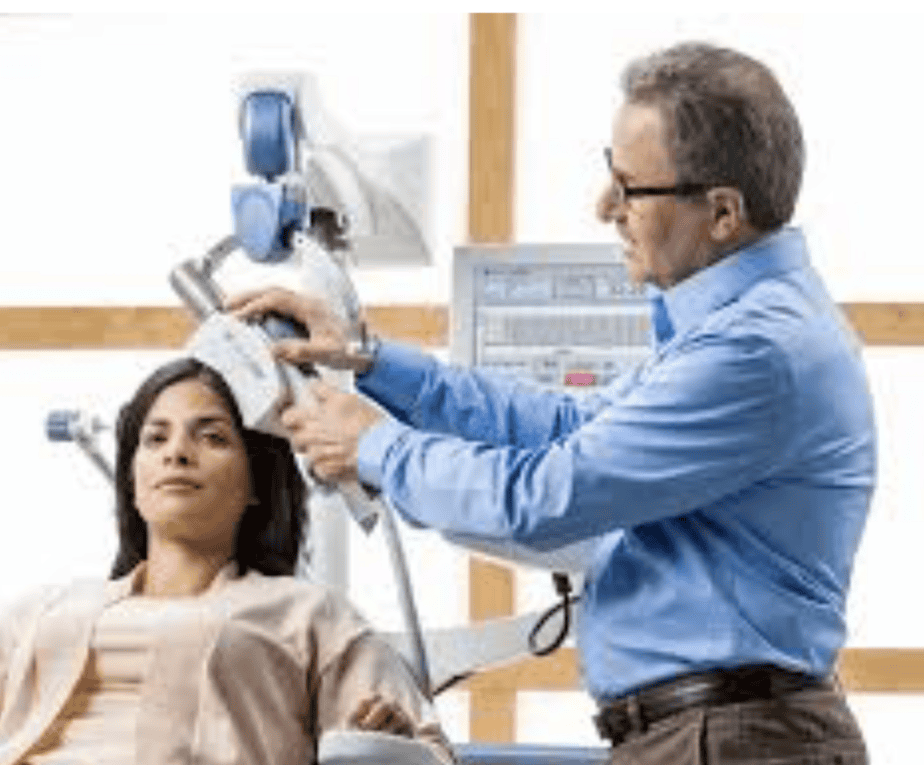
In recent years, there has been a growing interest in alternative therapies for mental health conditions, especially for those who do not respond well to traditional treatments like medication or therapy alone. One such alternative therapy that has gained attention is Transcranial Magnetic Stimulation (TMS) therapy. TMS is a non-invasive procedure that uses magnetic fields to stimulate nerve cells in the brain to improve symptoms of various mental health disorders. In this blog post, we will delve into the details of TMS therapy, its benefits, how it works, the conditions it can treat, its safety profile, and what to expect during a TMS session.
What is Transcranial Magnetic Stimulation (TMS) Therapy?
Transcranial Magnetic Stimulation (TMS) therapy is a non-invasive procedure that uses magnetic fields to stimulate specific areas of the brain. Unlike electroconvulsive therapy (ECT), which involves sending electrical currents through the brain to induce seizures, TMS does not require anesthesia or sedation and does not cause seizures. During a TMS session, a coil is placed against the scalp near the forehead, and magnetic pulses are delivered to targeted areas of the brain. These magnetic pulses stimulate nerve cells in the brain, which can help improve symptoms of various mental health conditions.
How Does TMS Work?
TMS works by targeting specific areas of the brain that are believed to be involved in mood regulation and other mental health functions. By delivering magnetic pulses to these areas, TMS can modulate neural activity and promote changes in brain circuits associated with mood, cognition, and behavior.
The exact mechanism of how TMS exerts its therapeutic effects is not fully understood. Still, researchers believe that it may help normalize brain activity in regions that are overactive or underactive in certain mental health disorders, such as depression or anxiety.
Conditions TMS Can Treat
TMS therapy has been FDA-approved for the treatment of major depressive disorder (MDD) that has not responded adequately to antidepressant medications. It is also being investigated as a potential treatment for other mental health conditions, including:
Bipolar disorder
Anxiety disorders
Post-traumatic stress disorder (PTSD)
Obsessive-compulsive disorder (OCD)
Schizophrenia
Chronic pain conditions, such as fibromyalgia
While TMS is not a first-line treatment for these conditions, it may be considered when other treatments have been ineffective or have caused intolerable side effects.
Benefits of TMS Therapy
Several potential benefits of TMS therapy make it an attractive option for individuals with treatment-resistant mental health conditions:
Non-invasive: Unlike some other brain stimulation therapies, such as electroconvulsive therapy (ECT), TMS is non-invasive and does not require anesthesia or sedation.
Well-tolerated: TMS is generally well-tolerated, with minimal side effects compared to medications or ECT.
Targeted treatment: TMS can target specific areas of the brain, allowing for precise modulation of neural activity.
Outpatient procedure: TMS sessions are typically conducted in an outpatient setting, allowing patients to resume their daily activities immediately after treatment.
Long-lasting effects: Many patients experience lasting improvements in symptoms even after completing a course of TMS therapy.
Safety and Side Effects
TMS therapy is considered a safe procedure, especially when performed by trained and experienced professionals. However, like any medical intervention, there are potential side effects to be aware of, including:
Scalp discomfort or pain at the site of stimulation
Headache
Muscle twitching or spasms during treatment
Dizziness or lightheadedness
Insomnia or fatigue
Seizures (rare, but possible, especially in individuals with a history of seizures or certain neurological conditions)
It’s essential to discuss any concerns about potential side effects with your healthcare provider before starting TMS therapy.
What to Expect During a TMS Session
A typical TMS session lasts about 30 to 60 minutes and is performed in an outpatient setting. Here’s what you can expect during a TMS session:
Preparation: You will be seated comfortably in a chair, and the TMS technician will place a coil against your scalp in the targeted area.
Stimulation: The technician will deliver magnetic pulses to the targeted brain region. You may hear clicking sounds and feel tapping or tingling sensations on your scalp during stimulation.
Monitoring: The technician will monitor your response to the treatment and adjust the intensity of the magnetic pulses as needed.
Post-treatment: After the session is complete, you can resume your normal activities immediately. There is no downtime or recovery period required after TMS therapy.
It’s important to note that TMS therapy typically involves multiple sessions over several weeks to achieve optimal results. Your healthcare provider will determine the appropriate treatment plan based on your individual needs and response to therapy.

















Follow Us